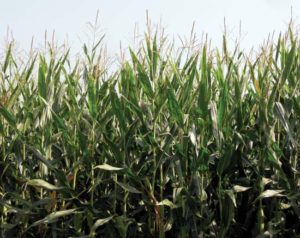Disease Resistance
Disease caused by bacteria and fungi are currently some of the major factors limiting crop production worldwide. In addition to negative effects of yield, diseases can also impact the post harvest quality of food. A large number of plant defense response genes encoding anti microbial proteins have now been cloned.Most of these are transcriptionally activated in response to infection or expose to microbial elicitor macromolecules. The products of defense response genes may include:
- Hydrolytic enzymes, e.g chitinase, 1-3 β-D glucanase and other pathogenesis related (PR) proteins.
- Ribosome inactivating proteins (RIPs).
- Antifungal proteins (AFPs).
- Biosynthetic enzymes for the production of anti-microbial phytoalexins.
- Wall bound phenolics, osmotins, thionins, lectins etc.
- Hydrogen peroxide
Transgenic plants generated in various crops for resistance to fungal and bacterial diseases.
|
Crop |
Gene transferred | Controlled Pathogen |
| Tobacco | Chitinase |
Rhizoctonia solani |
|
Potato |
PR5 | Phytophthora infestans |
| Kiwi fruit | 1,3-β glucanase |
Botrytis cinerea |
|
Rice |
Cecropin | Bacterial pathogen |
| Tobacco | Stilbene synthase |
Botrytis cinerea |
Herbicide Resistance

The use of herbicides to control weeds plays a pivot role in modern agriculture. A major effort has been developed in several laboratories to engineer herbicide resistant plants.More progress has been achieved in herbicide resistance as single genes govern the resistance. Three approaches have been followed :
- Over production of a herbicide sensitive biochemical target.
- Structural alteration of a biochemical target resulting in reduced herbicide affinity
- Detoxification-degradation of the herbicide before it reaches the biochemical target inside the plant cell.
Transgenic plants against various herbicides such as phosphinothricin, glyphosate, sulfonylurea, imidazolinones, bromoxynil, atrazine, 2,4 D, sethoxydim etc. have been generated in different food crops,vegetables, horticultural and ornamental species.Herbicide resistant transgenic plants have been reported in various crops but in cotton, flax, canola, corn, soyabean these have already been released for commercial cultivation and the list is growing rapidly.

